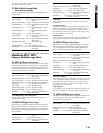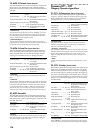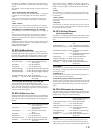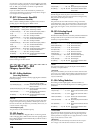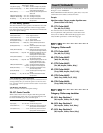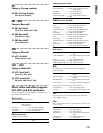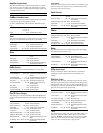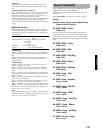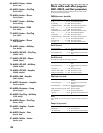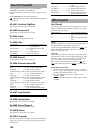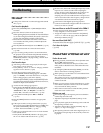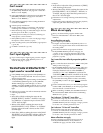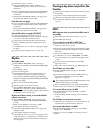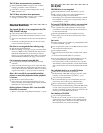
123
: Mode, Fine
If Cntrl is controlling Pitch and you change Mode or Fine, you
must once again use Cntrl to readjust the Max and Min parame-
ters.
: Feedback Position Select, : Feedback
When “Feedback Position Select” is set to “Pre,” the output of the
pitch shifter will be once again sent back to the pitch shifter. This
means that if “Feedback” is raised, the pitch will continue step-
ping up (or down) each time feedback is repeated.
If “Feedback Position Select” is set to “Post,” the feedback will not
pass through the pitch shifter, so that raising “Feedback” will
cause the pitch-shifted sound to be repeated without further pitch
change.
MicSim (Mic Simulator)
Mic Simulator is an effect that converts sounds recorded on a
conventional dynamic mic so that they appear to have been
recorded on an expensive condenser mic, a special studio mic,
or a vintage mic.
: Input Mic Type
Vo.Dy A dynamic mic frequently used for vocals that brings the
sound to the forefront and is also resistant to popping and feed-
back.
Mlt.Dy A dynamic mic usable for a wide range of applications
including most instruments and vocals, with a crisp and well
defined character.
: Output Mic Type
Vnt.Dy A simulation of a vintage mic known for its warm and
rich tone, and is ideal for vocals.
Mlt.Cn A simulation of a general-purpose studio condenser mic
with a wide range from low to high that is ideal for most instru-
ments.
Pc.Cn A simulation of a small condenser mic for instruments. It
has a distinctive high range, and is ideal for drum overdubs and
for acoustic guitar.
Whale A simulation of a dynamic mic with clarity and a sense of
power. Ideal for drum sounds.
Vo.Cn A simulation of a standard studio condenser mic that is
ideal for vocals, acoustic instruments, and narrations.
Vo.Tb A simulation of a vintage tube mic that is ideal for vocals.
BDr.Dy A simulation of a fairly large dynamic mic that is ideal for
bass drum sounds etc. that include the sense of air pressure char-
acteristic of a close-mic recording.
: Set
This switches the location of the mic. “Close” or “On” settings will
simulate the proximity effect that boosts the low range, so you will
need to use “Trim” to adjust the overall level.
These algorithms can be selected for an insert effect when
“1in1outx4” is selected as “Select Eff Type.”
Different effects can be used simultaneously on four chan-
nels/tracks.
Effects MM1–MM33 connect two mono effects in series.
Example
Algorithm number: Category number: Algorithm name
[Names of effects in the chain]
55: MM1: P4EQ – Exciter
[P4EQ Excit1]
The chain structure of each multi-effect is shown below.
For an explanation of the parameters of each effect in the
chain, refer to “Effects within multi-effect programs MM1–
MM33, and their parameters” beginning on the following
page.
55: MM1: P4EQ – Exciter
[P4EQ, Excit1]
56: MM2: P4EQ – Wah
[P4EQ, Wah]
57: MM3: P4EQ – Cho/Flng
[P4EQ, ChFl1]
58: MM4: P4EQ – Phaser
[P4EQ, Phaser]
59: MM5: P4EQ – Mt.Delay
[P4EQ, Mt.Dly]
60: MM6: Comp – Wah
[Comp2, Wah]
61: MM7: Comp – AmpSim
[Comp2, AmpSim]
62: MM8: Comp – OD/HiG
[Comp1, ODHiG]
63: MM9: Comp – P4EQ
[Comp1, P4EQ]
64: MM10: Comp – Cho/Flng
[Comp2, ChFl1]
65: MM11: Comp – Phaser
[Comp2, Phaser]
66: MM12: Comp – Mt.Delay
[Comp2, Mt.Dly]
67: MM13: Exciter – Comp
[Excit2, Comp1]
InMic (Input Mic Type)............Vo.Dy, Mlt.Dy Selects the mic that was used for
recording
OutMic (Output Mic Type)....Vnt.Dy, Mlt.Cn,
Pc.Cn, Whale,
Vo.Cn, Vo.Tb,
BDr.Dy
Selects the mic to be simulated
Set (Setting) ..................Close, On, Off, Far Mic setting
Trim (Trim) ........................................0...100 Sets the adjustment level
Insert (1in1outx4)
Eff
ec
tIn
s(
1in1
ou
tx4
)



